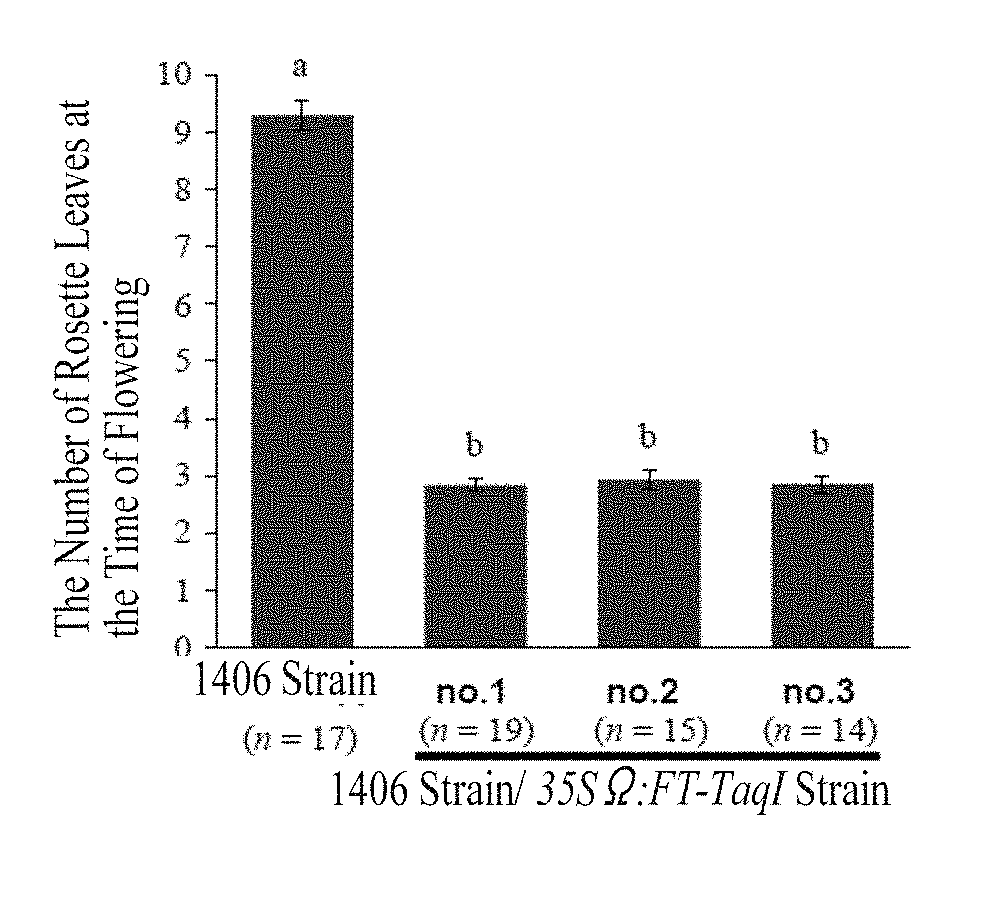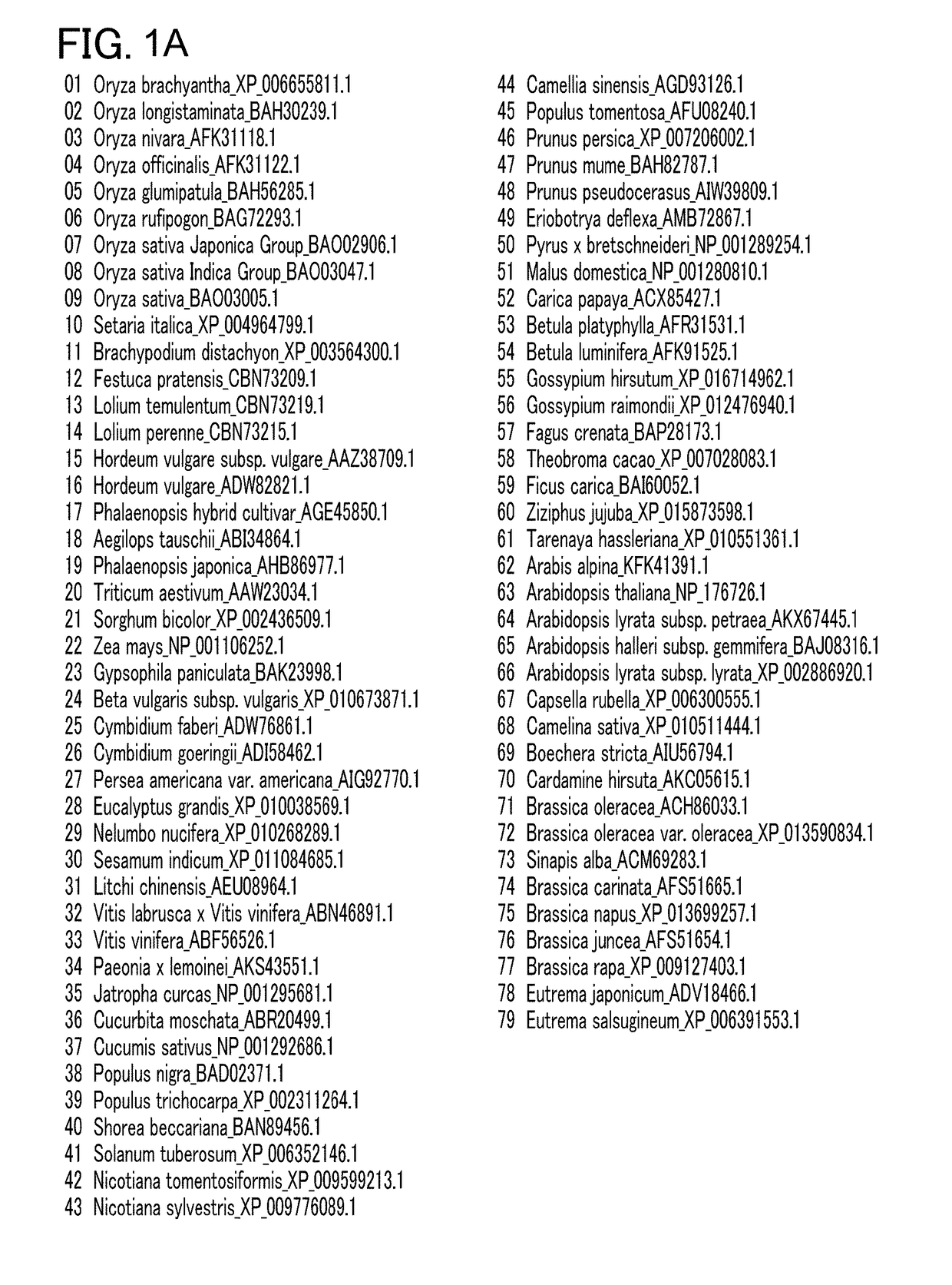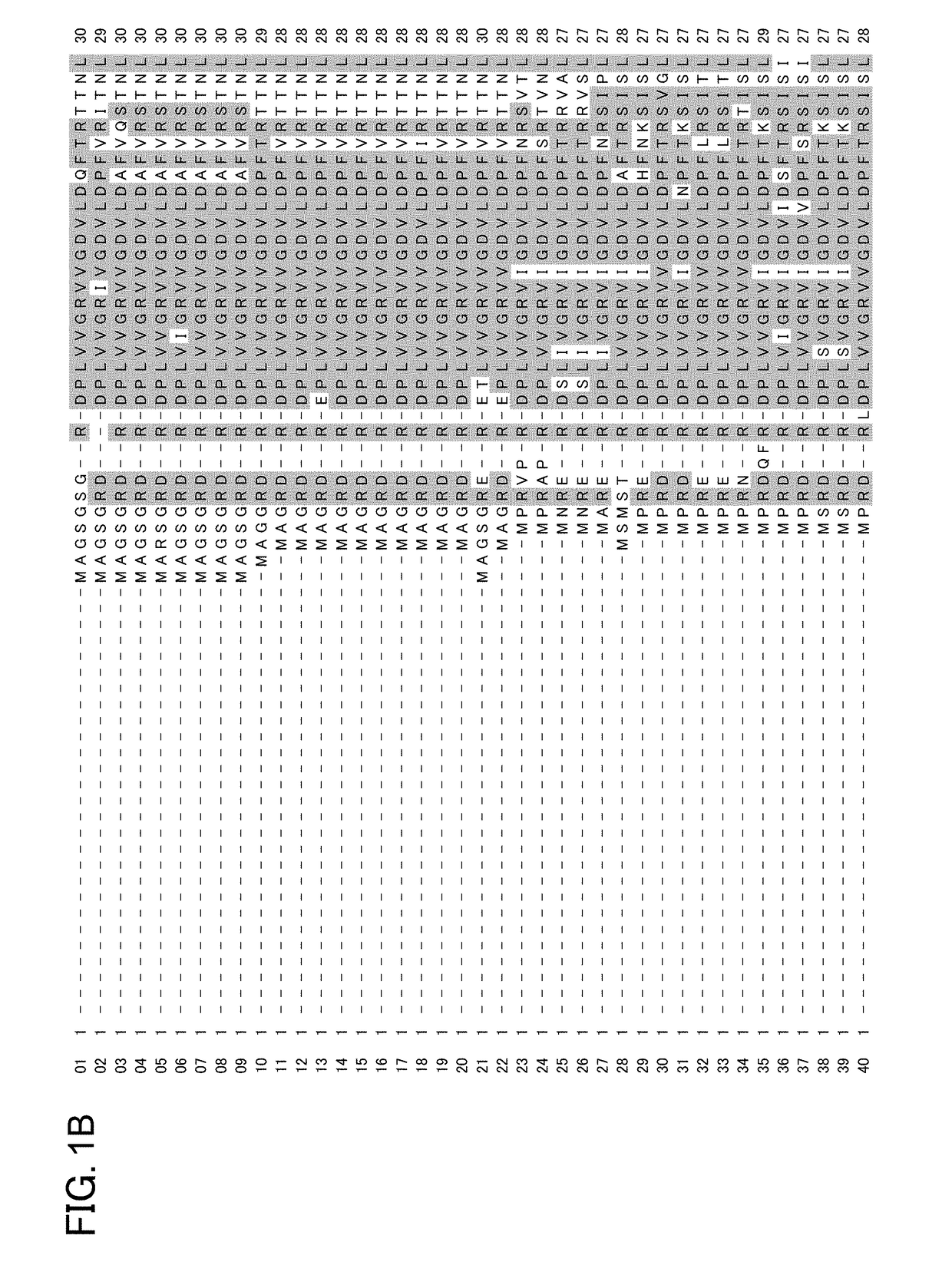Polypeptide for Genome Shuffling in Plants, and Use Therefor
a technology of polypeptides and genomes, applied in the field of polypeptides for genome shuffling in plants, can solve the problems of dna mutations and cell survival threats, and achieve the effect of reducing the effect of restriction enzymes
- Summary
- Abstract
- Description
- Claims
- Application Information
AI Technical Summary
Benefits of technology
Problems solved by technology
Method used
Image
Examples
first embodiment
for Effecting Activity of Polypeptide of Invention
[0149]To exploit the double-stranded DNA breakage activity and intertissue migration activity of the polypeptide most advantageously, in one embodiment the polypeptide is introduced into a tissue or organ other than a reproductive tissue or organ, and is then made to migrate based on its intertissue migration activity to a reproductive tissue or organ or precursor thereof, and a genome to be inherited by the next generation is then shuffled at that location based on the double-stranded DNA breakage activity of the polypeptide.
[0150]For example, when the plant body is bred and cultivated by sexual reproduction in such an embodiment, the polypeptide is directly introduced or introduced by transient expression into a tissue or organ not associated with sexual reproduction, such as a leaf, stem (excluding the stem tip, which is a reproductive precursor tissue) or root. A known transient expression system (for example, techniques availabl...
second embodiment
for Effecting Activity of Polypeptide of Invention
[0154]When the activity of the polypeptide, and particularly its double-stranded DNA breakage activity, is made to act almost constantly and constitutively, various embodiments are possible for example considering the possible damage to the plant body from the double-stranded DNA breakage activity. In all cases, the double-stranded DNA breakage activity is made to act in such a way that it is controlled at a fixed level of intensity or less.
[0155](1) For example, a polypeptide obtained by applying a thermophilic restriction enzyme to a polypeptide region for double-stranded DNA breakage activity is introduced into a plant body either directly or using the expression vector or the like. The plant body is then grown at a suitable growth temperature for the plant. In general, the growth temperature of the plant is lower than the optimum temperature of the thermophilic restriction enzyme. The intertissue migration activity and double-str...
third embodiment
for Effecting Activity of Polypeptide of Invention
[0162]Several embodiments are possible for transiently effecting or enhancing the activity of the polypeptide and its double-stranded DNA breakage activity in particular.
[0163](1) For example, the polypeptide is introduced into a plant body either directly or with the expression vector or the like. As in the first embodiment, the polypeptide is introduced in such a way that it is continuously present in the plant body. The plant is then deliberately grown for a specific period of time at any stage of plant growth at a temperature which is higher than the growth temperature and which is a high growth temperature closer to the optimum temperature of a restriction enzyme applied to the polypeptide for double-stranded DNA breakage activity in the polypeptide in order to effect or enhance the double-stranded DNA breakage activity. This serves to effect or enhance the intertissue migration activity and double-stranded DNA breakage activity...
PUM
| Property | Measurement | Unit |
|---|---|---|
| temperature | aaaaa | aaaaa |
| temperature | aaaaa | aaaaa |
| temperatures | aaaaa | aaaaa |
Abstract
Description
Claims
Application Information
 Login to View More
Login to View More - R&D
- Intellectual Property
- Life Sciences
- Materials
- Tech Scout
- Unparalleled Data Quality
- Higher Quality Content
- 60% Fewer Hallucinations
Browse by: Latest US Patents, China's latest patents, Technical Efficacy Thesaurus, Application Domain, Technology Topic, Popular Technical Reports.
© 2025 PatSnap. All rights reserved.Legal|Privacy policy|Modern Slavery Act Transparency Statement|Sitemap|About US| Contact US: help@patsnap.com



